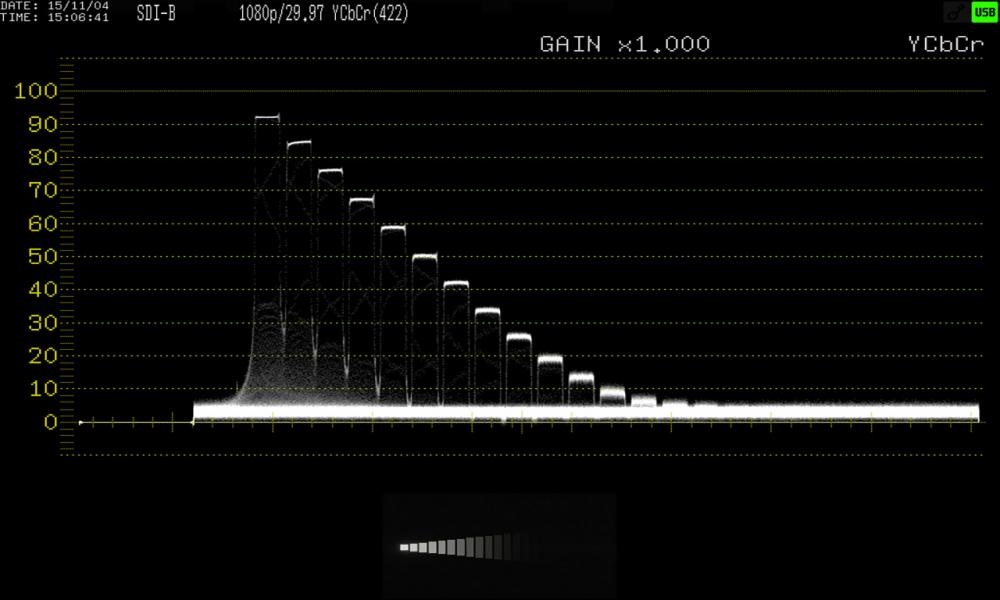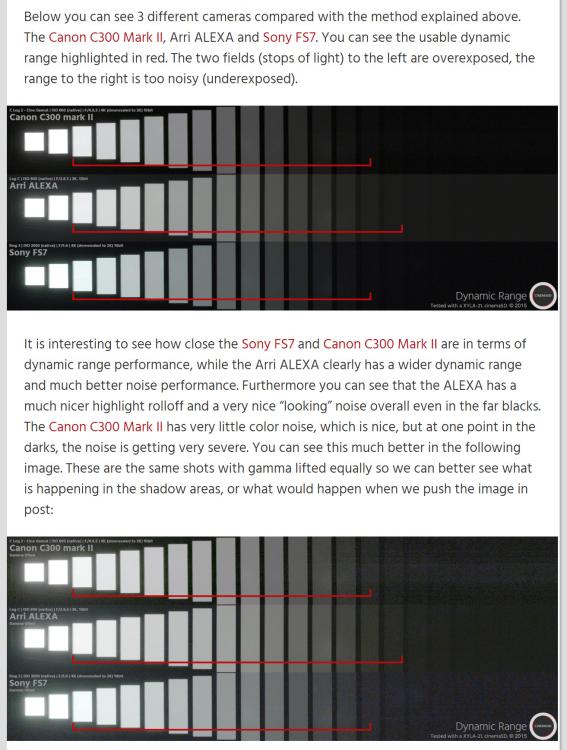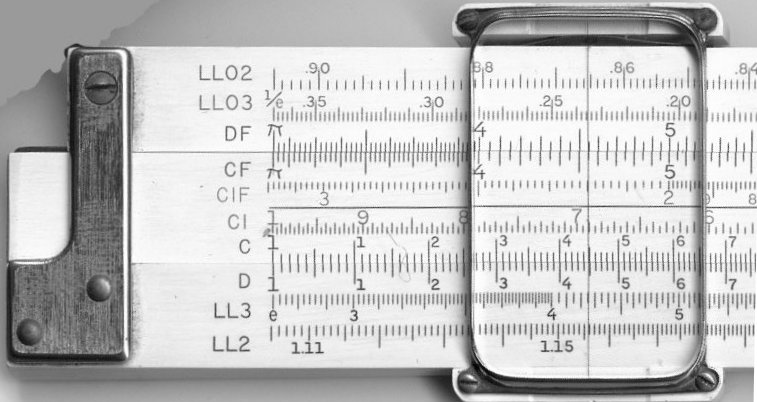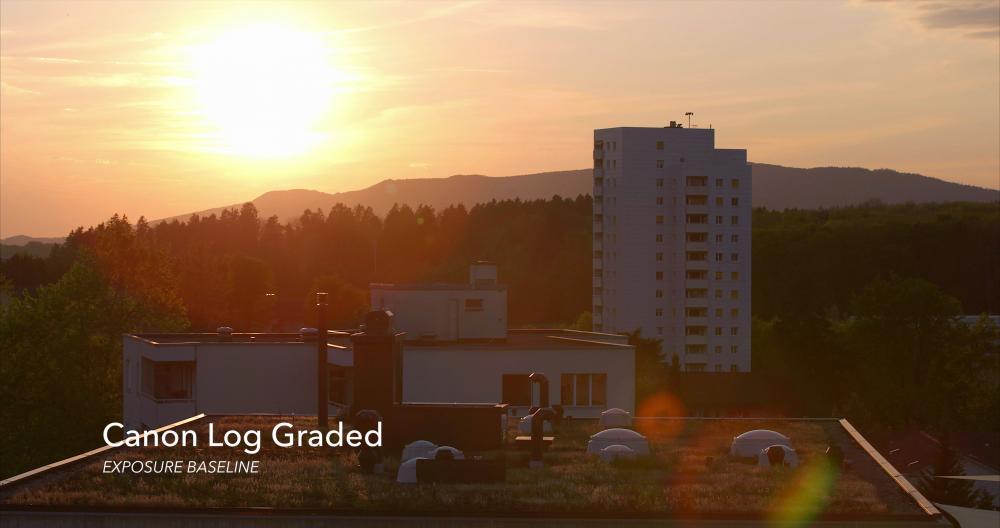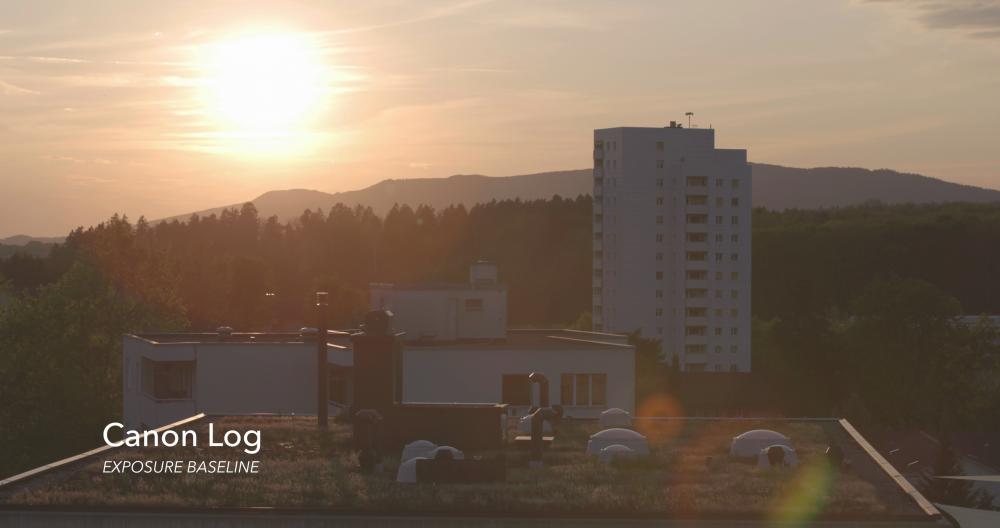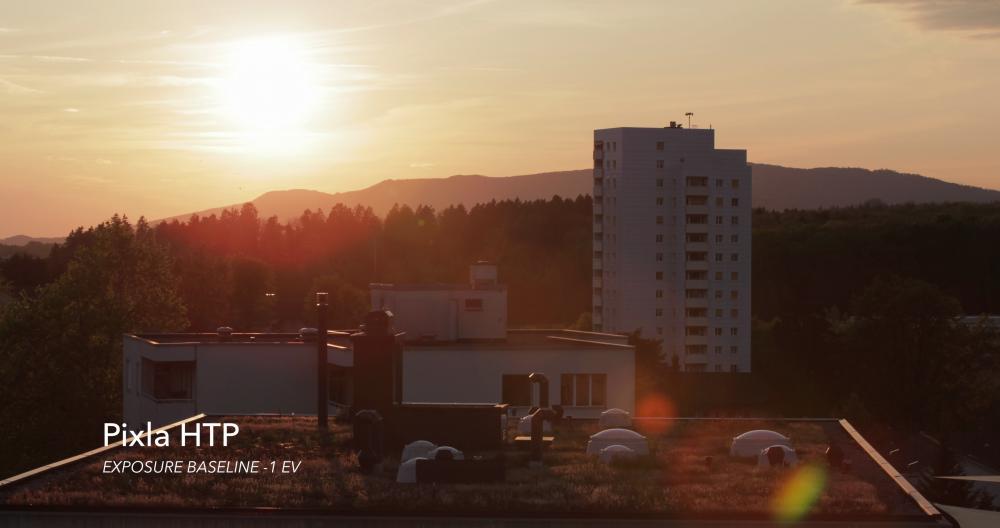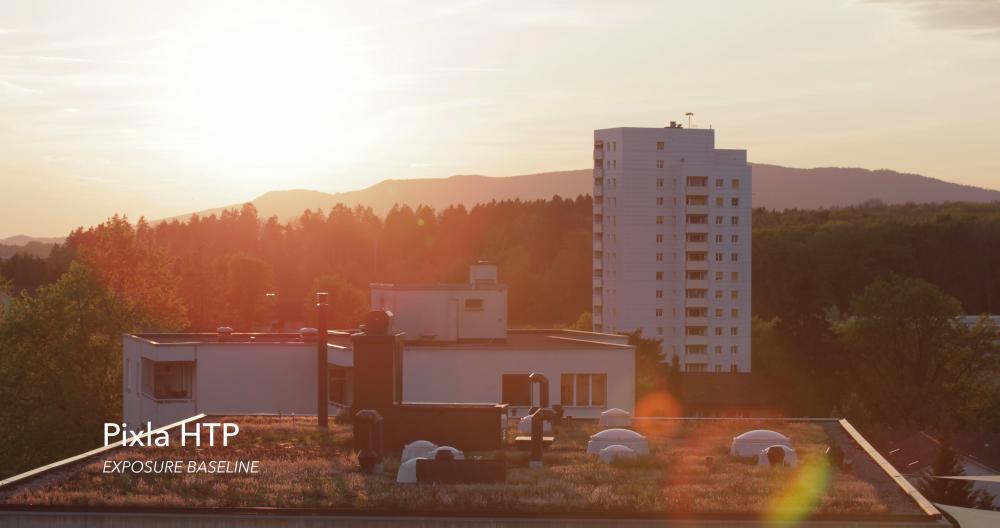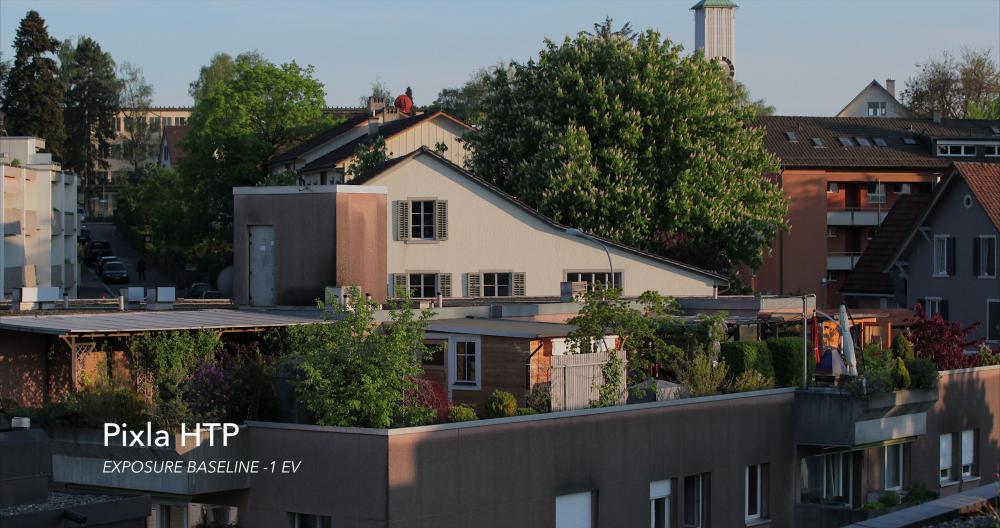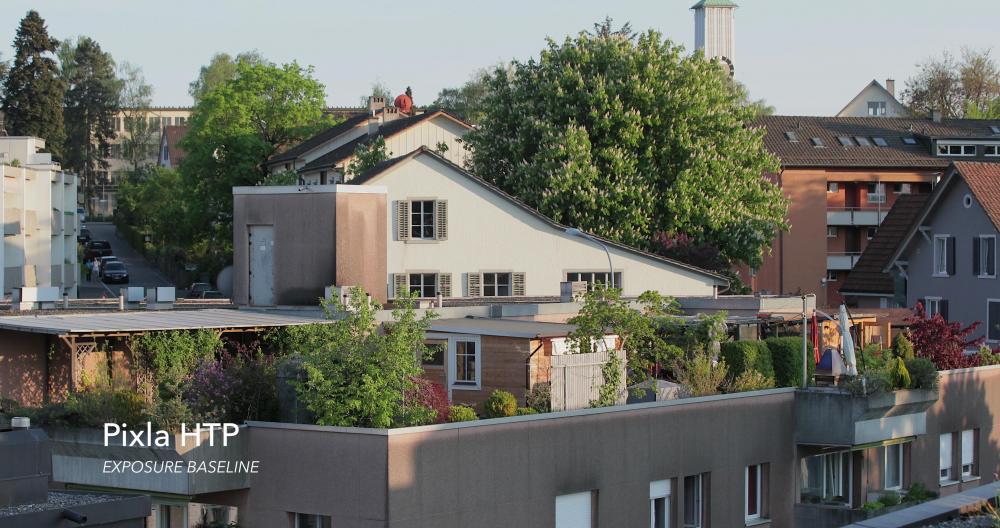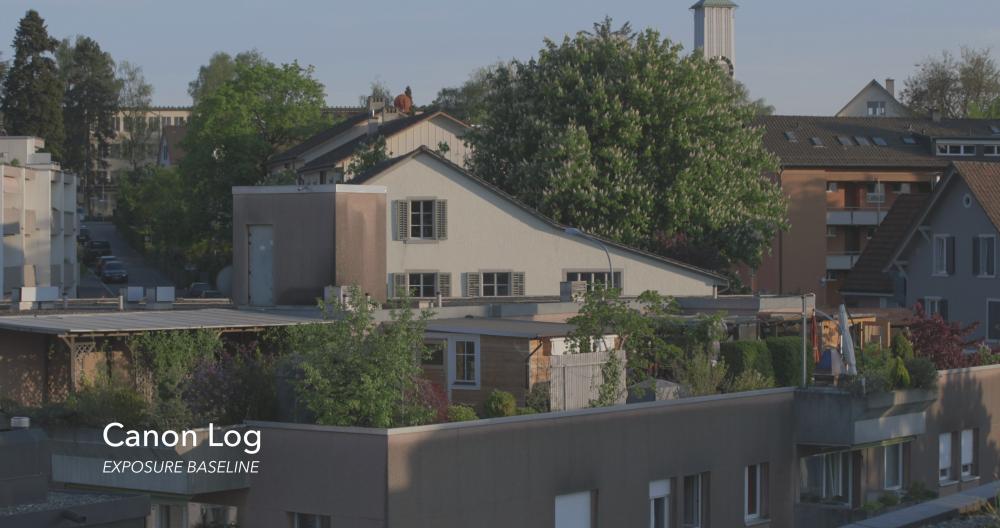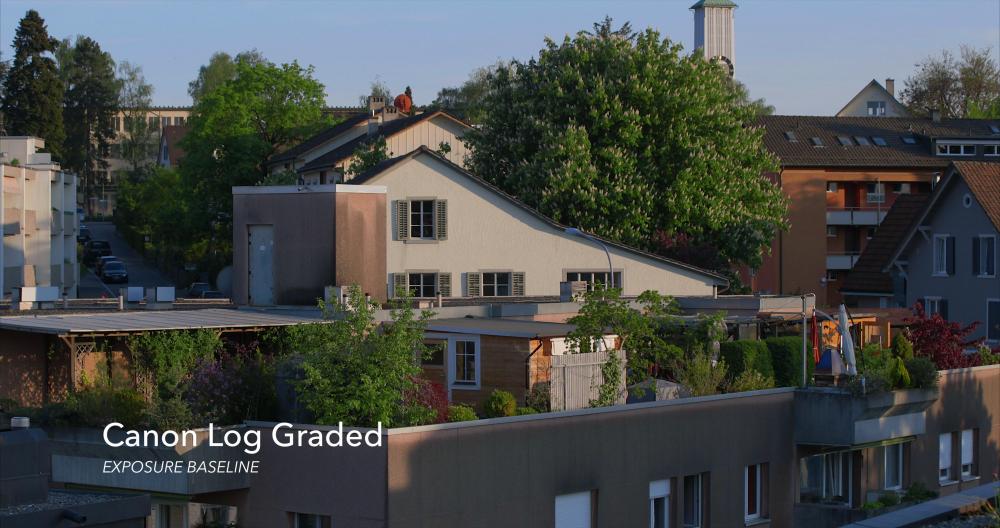
Kino
Members-
Posts
256 -
Joined
-
Last visited
Content Type
Profiles
Forums
Articles
Everything posted by Kino
-
The "cinematic" or "filmic" look is definitely too broad a concept, which is why I suggested considering the 1DC and 1DX II as two different kinds of film stock: one has softer roll-off, more DR, and a wider color gamut (owing to the advantages of grading with C-Log) and the other has abrupt roll-off, less DR, and a more limited but "vivid" color palette. Neither one is less "filmic" than the other since you can find many historical film stocks that mimic each one of these cameras. Of course, I prefer the first option, and I can't imagine that focusing is all that difficult on the 1DC considering the number of incredibly sharp images I have seen from that camera. And I don't think anyone who buys a 1D series camera for video wants a "proper video camera." That defeats the whole purpose. The form factor, weight, and ease of use alone provide so many advantages that make these cameras essential for some shooters. Besides, I prefer the 1DC's resolving power, 1.3x crop factor, colors, image depth, and highlight roll-off to pretty much everything I have seen from cameras like the Mini 4.6k, Sony FS7 and even the RED Raven that I have ordered (but may cancel or switch to Scarlet-W). And you can't even compare Canon's space-age manufacturing facilities to BMD's amateur and fourth-rate quality control.
-
Not in camera, as you would obviously lose stops in the highlights. A 6dB and 12dB gain were applied to the C300 II files in post to achieve those results: https://tech.ebu.ch/docs/tech/tech3335_s18.pdf Roberts is one of the greatest broadcast and video experts on planet earth and his camera tests are always highly informative. I'm sure he knows what he is doing, even though some of it seems like Voodoo to me.
-
Roberts's extensive test of the C300 II suggests that those stops are useful and can be recovered by boosting the gain. He also uses a different methodology to reveal the camera's true DR that a normal Xyla test would not reveal. It's all really impressive. I would certainly rank his test as far more comprehensive than Cinema5D's Xyla and IMATEST combo, so there will be no argument from me on that one. That guy is practically a genius. Maybe it is a 15-stop camera because of the C-Log2 implementation. That's exactly what his test demonstrates. Now imagine if we got C-Log2 and internal 10 bit recording on the 1DC II. I don't know if that's possible without a fan, something that is not going to happen on a weather-sealed body unfortunately. As for SNR conversion: 6dB = 1 stop.
-
Like DR, ISO performance is also a function of signal-to-noise, but they are separate things. A great low-light camera such as the A7S is not necessarily going to give you the greatest DR. The C300 II is a fantastic low-light camera (one of the best of the cinema cameras), but not necessarily the one with the greatest DR. There is no doubt that Alan Roberts is a star and helps to set EBU standards. I have the highest respect for him. You will note, however, that this was a test of the C300 II only and not a comparison: "Unlike other testers he does not do direct comparisons with other cameras. Each test stands on its own and comes with a set of recommendations for how users can set up the camera for good results. He tries 'to think like a normal user would think: What am I going to use this camera for? And how am I going to use it?'" You will also note the way in which he obtained these results: "Adding 6dB and 12dB gain confirmed that the dynamic range is indeed about 15 stops." That's fine and is something I mentioned above when talking about lifting the gain to obtain more DR. But you could do that with almost every camera and get more out of it, depending on your subjective standards of acceptable noise (yes, there is always interpretation involved in determining DR). I'm just not sure if it really changes the relative performance of the C300 II against the Dragon and Alexa, since those cameras all have different noise patterns and color performance when underexposed. It is also interesting that Roberts recommends shooting the C300 II in the HD 12 bit 4:4:4 mode for maximum performance.
-
Cinema5D uses IMATEST software to determine the "usable" DR from Xyla results, but you don't need that to see what the usable DR is in those C300 II results. You can see it for yourself on those Xyla charts where several bars in the range are useless because they are clipped or have too much noise to be counted as "usable" stops. It's really easy to see and does not make one "the dumbest person." Canon's response to the Cinema5D's assessment of 12 stops was not in the form of a Xyla where you can see noise patterns and clipping effects, but a waveform that they claim demonstrates 15 stops: Unfortunately for Canon, this waveform actually confirms that the C300II does not have 15 stops usable as the last 3 stops are completely useless. The problem here is that the last few "stops" you are looking at are differentiated by voltage differences that do not rise above the noise floor: https://***URL not allowed***/canon-measured-15-stops-dynamic-range-c300-mark-ii/ Moreover, Canon lists the C300 II's signal-to-noise at 67dB, which translates into 11 stops! That's about as damning as you can get. RED Dragon by contrast is listed at 80dB (which equals 13 stops not 16.5 as RED claims). That's a vast difference.
-
A retail price drop will affect the used price as well. And, unlike most cinema cameras, the 1DC has no sensor remapping function built into the camera so just make sure there are no bad pixels on any used unit you are looking at. The only way to fix it at that point is to send it back to Canon, which might get costly without a warranty.
-
Hurling insults isn't going to advance your argument, or make you seem particularly logical, composed, and mature. Are you here to debate people in a civil way or to insult them? We've been through the charts a million times. As I noted before, Xyla tests are up for interpretation and are not scientific. Acceptable levels of noise vary depending on who is undertaking the testing. What Cinema5D is doing is applying IMATEST software to the results to come up with one standard however arbitrary it may be to you or me. Then that standard is applied universally to all cameras so that they can all be compared against one another in an objective way. Moreover, their results are mostly consistent with DR tests from other sources such as the Hurlbut tests I posted above on the 1DC. You are free to believe whatever Sony and Canon state, but that doesn't mean that manufacturer claims are credible or that they can demonstrated through independent tests such as those undertaken by Cinema5D. I for one appreciate independent tests undertaken by industry technicians who provide the evidence to back their results more than baseless claims from a camera company's marketing department.
-
No one is stopping you from making completely false comparisons . . . Misinterpreting or misrepresenting DR numbers from a Xyla chart is far from arguing that the "earth is flat." That's just nonsense! We are talking about a difference of a few stops between manufacturer claims and actual DR performance in terms of "usable" stops. Besides, Cinema5D is independent of those manufacturers who routinely exaggerate their DR claims, which can be off by 2-3 stops as demonstrated by the C300 II and FS7 Xyla charts above. As for Arri, they generally don't advertise DR numbers for their cameras, even though the Alexa is shown as the best performer in Cinema5D's Xyla tests. I don't think there is any controversy in that at all.
-
Ebrahim, We could be here all day talking about testing methodology for DR, but life is too short. As I mentioned, Cinema5D's methods are not perfect because even IMATEST has to make arbitrary decisions about what level of noise or clipping is acceptable when determining steps of DR. Even so, once that methodology is applied universally to all cameras that they test, it provides as good a picture as any of which cameras have a greater or lesser range. Perhaps the 5DIII/C300 example is an anomaly, but we don't have all the data in front of us to make that determination. I just like the fact that their Xyla charts expose a lot of manufacturer (and fanboy) claims about certain cameras. Soon enough, BMD's claims about "15 stops" on the 4.6k will meet Cinema5D's Xyla-IMATEST combo. The results won't be pretty. So I think it's great that Cinema5D causes controversy because that tells me they are doing their job correctly by offending a lot of people who should know better than to believe manufacturer fictions on DR. As for the 1DX II, it's a camera to recommend more for function than cinematic image quality, which is not its forte. All the same, I think it would be a great documentary, corporate, travel, or event video camera, especially in shooting conditions that don't call for a lot of DR.
-
You, me, and everyone else! I check the 1DC price twice daily and it hasn't moved in months. I read that B&H had a flash sale at $6500 or $7000 at the end of 2015 but I haven't seen anything like that since. I don't expect that the retail price will move until we are closer to the 1DC II announcement.
-
So getting back to the main topic of this thread, here is some great 4K 60fps slow motion from the 1DX II: The performance of the 800 Mbps MJPEG is just astounding here in terms of the detail you can see in the image. It's a very high-quality slow motion with perfect motion cadence. I guess it better be at 100 MB/s!
-
The standard is Alexa, they advertised 14 stops and the test proved it. If you must say C300 has more than 12 stops, than Alexa can do 15 or even 16, but ARRI decided on 14 based on years of research and strict standards. 12bit RAW does not increase dynamic range, and it does not make any part of it "more usable". SNR is affected by sensor characteristics and compression, not quantisation. You must have missed the part where I said that Canon's claim of 15 stops is "false" because it would put the C300 II above the Alexa. I thought I was pretty clear on that. Cinema5D's Xyla test clearly showed the Canon as behind the Alexa and on par with the FS7 at 12 stops "usable" based on their methodology. I also never said that RAW "increases" dynamic range only that it allows for better recovery of the highlights and shadows in post depending on your camera. On the BMPC-4K, this is very much the case as RAW maximizes the available DR from the sensor when you compare CDNG and ProRes files in Resolve. But it should be pointed out that RAW implementation simply does not behave the same on all cameras (e.g., Log vs. Linear) to make any generalizations about what it might do to the camera's potential DR as Sony FS7 owners were unfortunate enough to learn when they paid thousands of dollars to add a RAW "upgrade" that was really a downgrade in DR when compared to the camera's internal 10 bit 4:2:2 S-log3.
-
You will notice that I made the distinction between visible and usable DR. The Xyla test reveals the entire "visible range," but Cinema5D's conclusions on DR are generally based on the "usable range," which can be reduced by 1-2 stops (especially with RAW). That's what I'm referring to as the recoverable DR that Cinema5D does not include in its DR ratings. You can see this on their Xyla tests as the difference between all the steps the camera records and the red line that marks what they accept as "usable" DR. They even lift the gamma to expose this expanded range that is accessible in post. On the C300 II, they counted only 12 steps (13 bars) of usable DR, whereas the visible DR range goes beyond that by several stops. Also, the C300 II was tested in its internal 10 bit 4:2:2 codec, where it achieved 12.3 stops of DR on IMATEST. However, using 12 bit RAW one would assume a slightly greater DR and a more usable range. They did not test the camera using its 4K 12 bit RAW output. They claim to have tried it out on 2K 12 Bit RAW but do not post the results as, according to them, it was no different from the 10 bit file. Ultimately, a Xyla test is just another test with variables that can affect the outcome, including the acceptable level of noise or clipping that one interprets when counting steps. Using IMATEST just guarantees that all camera results are treated equally and can be compared against one another. IMATEST is not some higher standard of DR "precision." It still has to make a quantitative assessment of acceptable noise and clipping levels. Yet there is no universal or scientific standard for noise performance. What is acceptable to one person may not be to another.
-
The C300 II Trick Shot video is actually a pretty amazing demonstration of DR and color. It just shows you what you can do with C-Log2 even in a compressed 10 bit 4:2:2 codec. This is why it is so important that the 1DC has C-Log. It makes an 8 bit camera act like 10 bit, while a 10 bit camera acts like 12 bit. That's the magic of a good Log implementation. Cinema5D's methods certainly leave something to be desired as they switch between talking about "visible DR" and "usable DR" in the same review or across reviews. They never posted a 1DC Xyla, but claim that both the C300 I and 1DC achieve around 10-11 stops of "usable dynamic range," without noting whether they employed C-Log (I would imagine they did): https://***URL not allowed***/dynamic-range-sony-a7s-vs-arri-amira-canon-c300-5d-mark-iii-1dc-panasonic-gh4/ Personally, I find Hurlbut's over-and-under tests of the 1DC and C500 to be a far more valuable indication of DR. His series of tests with the C500, the Alexa, and RED Dragon are also very impressive in terms of what they reveal about the C500 as a camera that surprises with great color and low-light performance: What I mean by "RAW recovery" is simply what happens when you go into Resolve and use highlight and shadow recovery to extract more DR in the RAW file that you otherwise would not see if you are just looking at the ungraded image. Xyla tests such as the one used by Cinema5D do no represent that extended range, so we could add at least an estimated 2 stops to their results for RAW-capable cameras like the C300 II. Note that there is nothing scientific here about how many stops you can recover. It's just an estimate, but that is certainly the way it works with the CinemaDNG files from my BMPC-4K when I take them into Resolve. I recall that Cinema5D rated the BMPC-4K at 9 stops whereas using Resolve you can lift the shadows at least one stop and recover highlights by at least a stop. Thus, the recovered DR is closer to 11 stops. As for the Sony F5/F55, it outputs true 16 bit linear RAW . . . no contest there. It's pretty much the king when it comes to RAW bit depth. Even RED R3D files offer only "16-bit precision" while Alexa and Ursa 4.6k use Log to achieve greater a bit depth that they don't actually record.
-
This so-called "source" is a member on a fredmiranda.com forum who posted his own chart to the forum with the following caveat: "Note: all the RAWs (except for the 1DX2) come from Imaging Resource ISO series (the 1DX2 have been received from another source which I won't disclose; please do not ask me for these RAWs)." This is not a like a publication by DPreview with transparent examples for everyone to see. Moreover, I wouldn't put too much value in that chart until I could see the 1DX II examples for myself. DPreview's test of the 1DX II is fairly damning and is there for everyone to see. Another test with examples showed that the 1DX II and 1DX are actually identical in performance: Just like DPreview, he provides concrete examples to prove his point: the 1DX II offers no improvements on DR or noise performance. I also believe they are identical for reasons I stated above in that the 1DX II is starting out with a signal-to-noise disadvantage with its smaller photosites that it has to overcome through more advanced sensor tech and processing (Digic 6+).
-
Where are you getting these DR numbers for the 1DX II and why would you assume that the 1DC has a "weaker sensor"? In fact, most of the tests we have seen show equal performance, if not an edge for the older sensor as in the DPreview article already cited on this forum: http://***URL removed***/news/8090146652/canon-eos-1d-x-mark-ii-studio-tests After all, the 1DX/1DC sensor has larger photosites than the second generation (6.95 vs. 6.65 microns) and can theoretically achieve a greater signal-to-noise ratio. Perhaps processing advancements and the gapless micro-lens sensor technology can make up for the smaller photosites of the 1DX II so as to even out the noise performance between the cameras, but it is doubtful that it could be much better. From what I have seen, the 1DX II video footage performs exactly the same as the 1DC in neutral no matter what you do with those superficial picture profile settings, which means that it has 9 stops of DR and a lot of crushed blacks and nearly-clipped highlights: The 1DC on the other hand will give you a very different look with better DR, smoother roll-off, and much lower contrast, not to mention the wider and richer color gamut that goes with C-Log when grading the footage in post:
-
No need to argue with me about the virtues of the C300 II, as it is one of my dream cameras. I just wish the price were about $5-6K lower so that I could justify such a purchase. At $10K, it would be very much worth it. Now the only "inaccurate narrative" is found in Canon's claims about the C300 II's 15-stop DR, which would place it beyond the Alexa! Cinema5d's Xyla test of the C300 II shows only 12 stops of DR. The FS7 was also found to have lower DR than Sony's claims of 14 stops: https://***URL not allowed***/canon-c300-mark-ii-review-dynamic-range/ With the C300 II's internal 10 bit and external 12 bit RAW output, however, you should be able to recover much more of its highlights and shadows than the 1DC, so perhaps we could say that the C300 is a 14-stop camera with RAW recovery. There is no debating that at 2X the price ($16K) it is a better cinema camera than the 1DC and that it produces stunning results. Just because the 1DC can reach similar DR numbers as the FS7, C300 and C500 in a latitude test does not mean they are equal in other ways as I have stated. The same could be said for the A7SII DR, which comes in at just below 12 stops, but which has the worst codec of the bunch: https://***URL not allowed***/ultimate-sony-a7s-ii-vs-a7s-test-difference/
-
That's not a very good test as the 1DC in that comparison was shot with a different framing that placed more sunlight into the background relative to the other cameras. They should all have the same framing. Despite this problem, you can see that the overexposure of the building looks equal on the 1DC and C500 frame grabs. Now the "cinema cameras" I was thinking of are those in the 1DC's general price range such as the FS7 and C300. But, in any case, different tests will produce different results, especially when we have no idea what the exact settings were on each camera. Here is an actual side-by-side video that shows a very good performance for the 1DC in terms of its DR when compared to cinema cameras including the C500: It's also important to note that the C500 has an expanded DR in HD 12 Bit RGB 4:4:4 relative to what it achieves in 4K 10 bit RAW, where its latitude is reduced. In the HD mode, it is a very impressive camera indeed. In 4K, however, the C500 has a reduced DR of around 12 stops, which is roughly equivalent to the FS7 and the C300 II: https://***URL not allowed***/canon-c300-mark-ii-review-dynamic-range/ The 1DC itself was measured at 12.5 stops by Hurlbut, who has tested both the C500 and the 1DC very extensively: http://www.thehurlblog.com/film-education-online-the-next-gen-in-digital-film-capture-canons-4k-1dc/ His exposure and latitude tests for the 1DC and C500 are available on his channel. Here are just a few examples: In both overexposure tests, you can see that the C500 and the 1DC will go about 3 stops over before they clip in a way that is unrecoverable, unlike the Alexa which can go much further. Based on Hurlbut's tests, I would say that the 1DC indeed "rivals" the C500 when it comes to DR but not in any other way as a proper cinema camera.
-
As Ebrahim explained so well in his post, C-Log has access to the RAW image data coming off the sensor before it has gone through JPEG encoding. This is why C-Log on the 1DC is capable of recovering highlights while retaining shadow detail simultaneously: It’s an astounding performance here that rivals or exceeds the DR of many cinema cameras including Canon’s own C500. No amount of tinkering with the 1DX II picture profile settings and “cinestyles” can actually affect the recorded gamma curve like C-Log so as to capture this kind of DR.
-
Panasonic adding V-log to the GH4 (or Sony adding a paid RAW upgrade to the FS5's SDI output) is a poor comparison. Panasonic in particular has nothing else to protect from the Micro 4/3 GH4, while Sony is offering a feature that they had already promised at launch and which is available on other FS cameras like the cheaper FS700. C-Log is exclusive to Canon's Cinema EOS line and their XC10 camcorder, which doesn't compete against the cinema line. Based on that reason, you will never see it on the 1DX II and you will be waiting a lot longer than those who are waiting for the 1DC II. Anyway, your 1DX II is already a great camera, especially for lighting conditions that don't require C-Log such as nighttime or overcast days. It also has many of the qualities of the 1DC's amazing image for a fraction of that camera's original price. I just feel that history is about to repeat itself on the 1DX and 1DC releases.
-
On a scale of 1 to 10, with 10 as "Most Likely," I would say -5! This is not a Cinema EOS camera or a camcorder like the XC10, so there is absolutely no chance. C-Log, Super 35mm mode, and the recording time limit (to avoid EU taxes) have been withheld from the 1DX II in order to protect the separate 1DC line and to keep the retail price competitive with Nikon's D5 ($6500). These are not the kinds of things you just add in firmware. The 1DC itself did have a few firmware upgrades (25P, Audio Line In, cinema lens support), but those were all features consistent with other Cinema EOS cameras and were minor in comparison. Well, of course, there will be a "paid firmware upgrade" to the 1DX II, but it will come with a new body attached in the form of the 1DC II and it will retail for several thousand more. I would expect some kind of announcement on the 1DC II after the Rio Olympics, when the initial 1DX II sales begin to taper off. What must sting really bad from last time is that early 1DX adopters were blindsided by the 1DC announcement just one month after the 1DX's release in 2012. I feel like Canon will prolong the 1DC II announcement just a little longer this time, if for no other reason than the 1DC model that is already sitting on the shelves.
-
No worries. My point is simply that HTP doesn't really do anything you couldn't do with changing the exposure up or down. In all of these cases of HTP, picture profiles and Technicolor Cinestyle, you are not gaining any DR. You are just moving the scale around like a slide ruler through the 1DC exposure range. Only C-Log is able to access the high dynamic range of the sensor and actually expand the standard range by 3-4 stops in order to extract its full potential.
-
Ebrahim, I agree with everything in your post, except for the part on HTP (Highlight Tone Priority). In the comparisons I have seen, very little DR is gained in this mode relative to C-Log. I encourage everyone to download Andree’s original 1.8 GB 1DC 4K file on Vimeo, since it is incredibly informative on the issue of C-Log vs. HTP: Without C-Log, there is definitely a loss of a few stops of DR in the highlights and shadows. Yes, it's possible to bring down the exposure to compensate, but too much is lost in terms of shadow detail and color saturation. Look at how the green and yellow foliage loses its color in the -1 EV HTP footage of the sunset. In the shots of the clock tower, Canon C-Log captures every detail of the sky as well as the shadows (the uploaded frame grabs are not doing it justice, but it is there in the original). Without C-Log, you have to choose which one to salvage. But that's not the end of the story. C-Log is capturing even more detail in midtones, highlights and shadows, no matter what you do with your neutral footage. It's actually quite amazing the difference it makes (and Andree’s is not the only footage I've seen that demonstrates such a stark contrast between neutral and Log).
-
Currently, I have a BMPC-4K for my own projects and I don't want anything more to do with these massive CinemaDNG files or the rig that I had to assemble to carry the V-Lock battery (the internal battery lasts about 30 minutes). Its rear screen is also completely useless outdoors and the "black sun" issue has ruined many of my shots that cannot be fixed in Resolve. With its limited DR, I have to shoot this camera 12 Bit RAW instead of ProRes in order to recover highlights and shadows and that means that 1 minute of footage takes up 12 gigabytes! It's also very difficult to edit on Resolve unless you have two GPUs. The 1DC would alleviate many of these problems and allow me to take my camera places where my current setup is impractical. I would also be able to use my slider and Steadicam and carry all this equipment to remote locations in the forest, for example, where I have gone in the past with smaller cameras. Add to that the weather-sealed body and my L glass collection and it's a perfect combination. If I keep to the Raven preorder or switch to a Scarlet-W, I would retain the RAW quality while easing up on the processing requirements for post. Both the 1DC and the Raven/Scarlet-W would offer a significant improvement in DR. And this is not even to mention the IR pollution on the BMD sensors . . .
-
Ebrahim, It's interesting to me that you are trying to decide between the 1DC and the 1DX II. I just don't think they can be compared at all. In my case, I am trying to decide among the Raven, Scarlet-W, 1DC, FS7 and UM 4.6k (cancelled my order on that one before it shipped!). I currently have a deposit on the Raven, but I'm not sure if I will upgrade to Scarlet-W or switch to the 1DC. Those are the 1DC's "peers" in terms of image quality as far as I can tell from comparing camera files from all of them. And even if I end up with a Scarlet-W, I can tell you that the 1DC stands up to Dragon 5K footage in every way but the color palette. I would say that the 1DX II and 1DC actually resolve more detail than the Raven at 4.5K, owing to the aggressive OLPF or anti-aliasing filter that RED employs on these cameras. At 5K, the Scarlet-W draws even in resolving power, and, with the RAW "pseudo-16 bit" color palette, it's a much more attractive investment for me. But, still, I am continuously drawn back to the 1DC because of its amazing image quality, its portability/weight and its weather sealing. It's a very tough decision.


